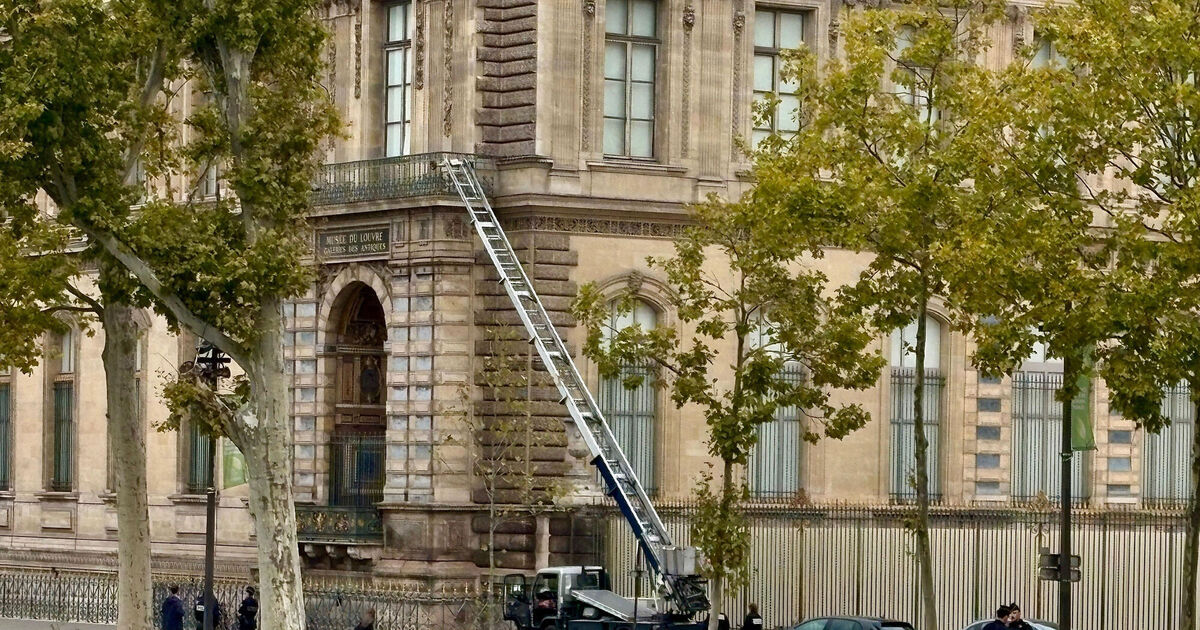There’s always been a certain romance to a heist. From The Thomas Crown Affair to Ocean’s Eleven and Gangster Granny, the thieves move with an elegance the rest of us reserve for weddings and funerals.
The plan is neat, the timing perfect, the suits pressed. Nobody bleeds. Someone, probably wearing leather gloves, says something profoundly witty as a diamond necklace drops into a velvet bag.
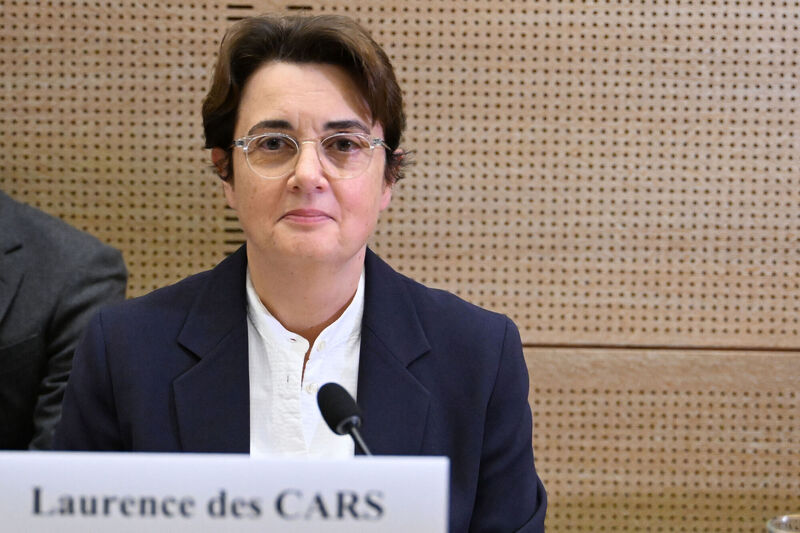 The Louvre director, Laurence des Cars, did what French officials do best: offered her resignation with exquisite regret. The government declined it, perhaps realising that sacking her wouldn’t reassemble the jewels. Picture: AP/Emma Da Silva
The Louvre director, Laurence des Cars, did what French officials do best: offered her resignation with exquisite regret. The government declined it, perhaps realising that sacking her wouldn’t reassemble the jewels. Picture: AP/Emma Da Silva
You’d imagine them escaping on vespas, helmets on, jewels tucked beneath reflective vests. Cue accordion music. Cue the opening credits. Except this wasn’t a movie. This was last Sunday morning in Paris.
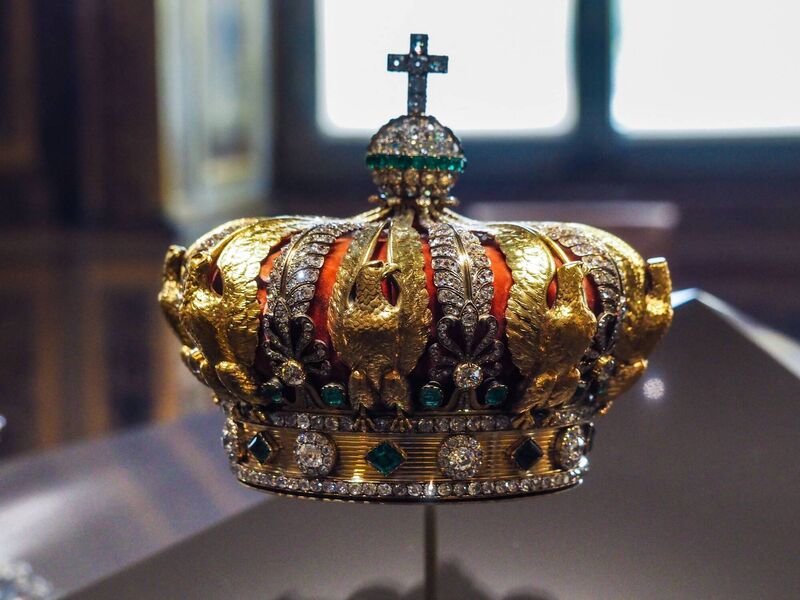 A tiara once worn by Empress Eugénie was among the jewellery stolen in the heist. Picture: Maeva Destombes / Hans Lucas/AFP via Getty Images
A tiara once worn by Empress Eugénie was among the jewellery stolen in the heist. Picture: Maeva Destombes / Hans Lucas/AFP via Getty Images
The thieves didn’t just steal some rocks. They stole a slice of French history. A tiara once worn by Empress Eugénie, an emerald necklace from Marie Louise, a brooch that gleamed on the neck of royalty long before bitcoin was born.
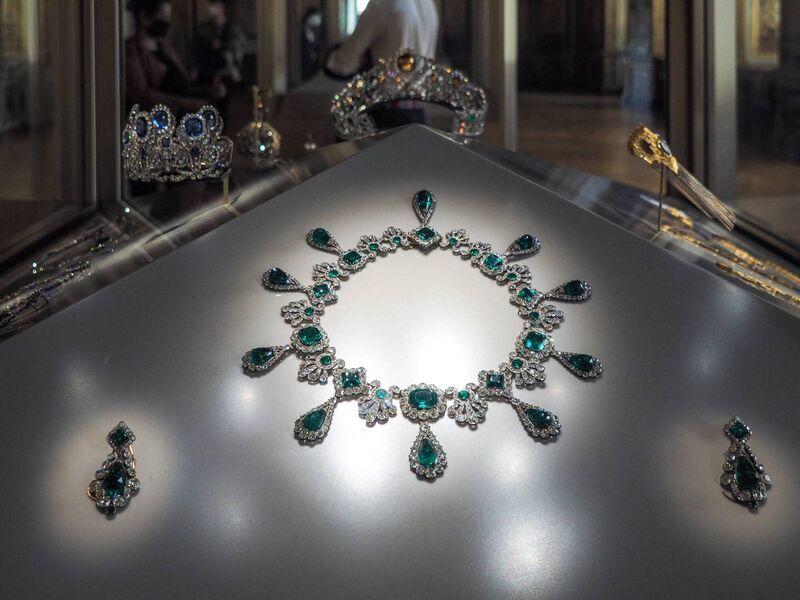 Necklace and earrings from the emerald set of Napoleon’s second wife Empress Marie Louise on display in the Apollo Gallery. Picture: Hans Lucas AFP via Getty Images
Necklace and earrings from the emerald set of Napoleon’s second wife Empress Marie Louise on display in the Apollo Gallery. Picture: Hans Lucas AFP via Getty Images
But this heist has exposed something else: The under-funded, under-staffed, sometimes under-cared-for reality behind the grandeur. Unions at the Louvre had already warned of “destruction of security jobs” before this. Alarms that should have been upgraded years ago were “in the process” of being replaced. You can almost hear the bureaucratic shrug: We were getting around to it.
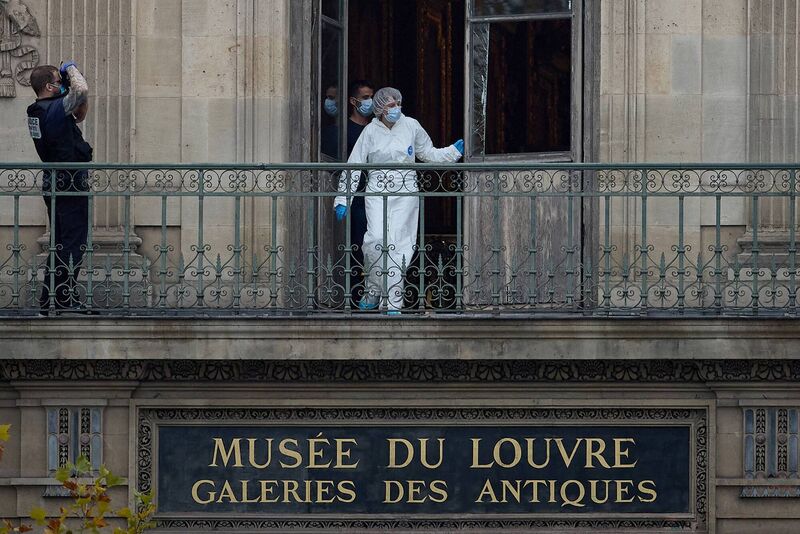 A French forensics officer examines the cut window of the gallery where the thieves broke in. Picture: Kiran Ridley/Getty Images
A French forensics officer examines the cut window of the gallery where the thieves broke in. Picture: Kiran Ridley/Getty Images
So, what happens now? After the embarrassment fades and the press conferences end, how does the Louvre — and every other museum — respond? Well, like all great embarrassments, we can expect an overcorrection. There’ll be new biometric locks, AI-assisted motion sensors, guards with bodycams, and drones scanning the courtyards after dark.
The Louvre’s task now is not to turn itself into a fortress, but to build faith again, faith that history is being watched over by something more than sensors. Maybe that means better staffing, not just better software. Maybe it means treating security as stewardship, not surveillance. Or maybe it means admitting a simple truth: That no lock is ever perfect, and no jewel ever truly safe. Especially if it was stolen in the first place.
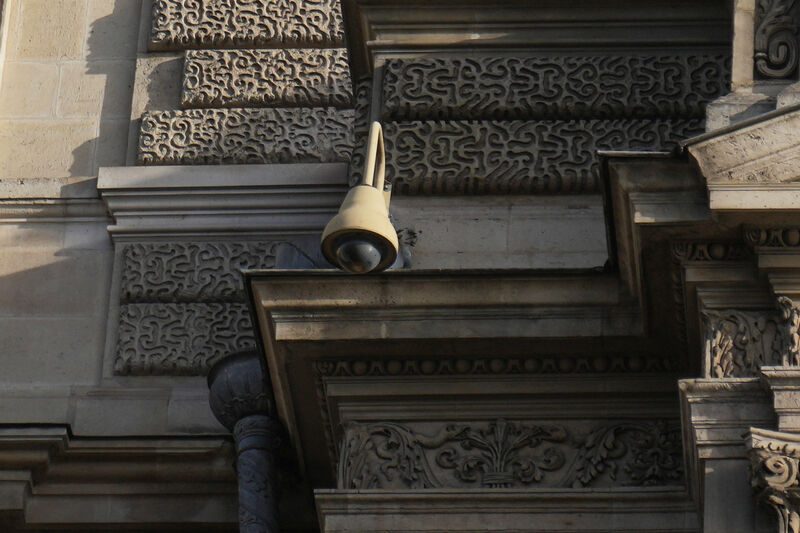 A surveillance camera on a facade of the Louvre museum, three days after historic jewels were stolen in a daring daylight heist. Picture: AP Photo/Thibault Camus
A surveillance camera on a facade of the Louvre museum, three days after historic jewels were stolen in a daring daylight heist. Picture: AP Photo/Thibault Camus
Already, smaller French museums have reported attempted break-ins — what one official called “the contagion effect”. Once someone proves it can be done, others start rehearsing their own schemes. And not just in France.
